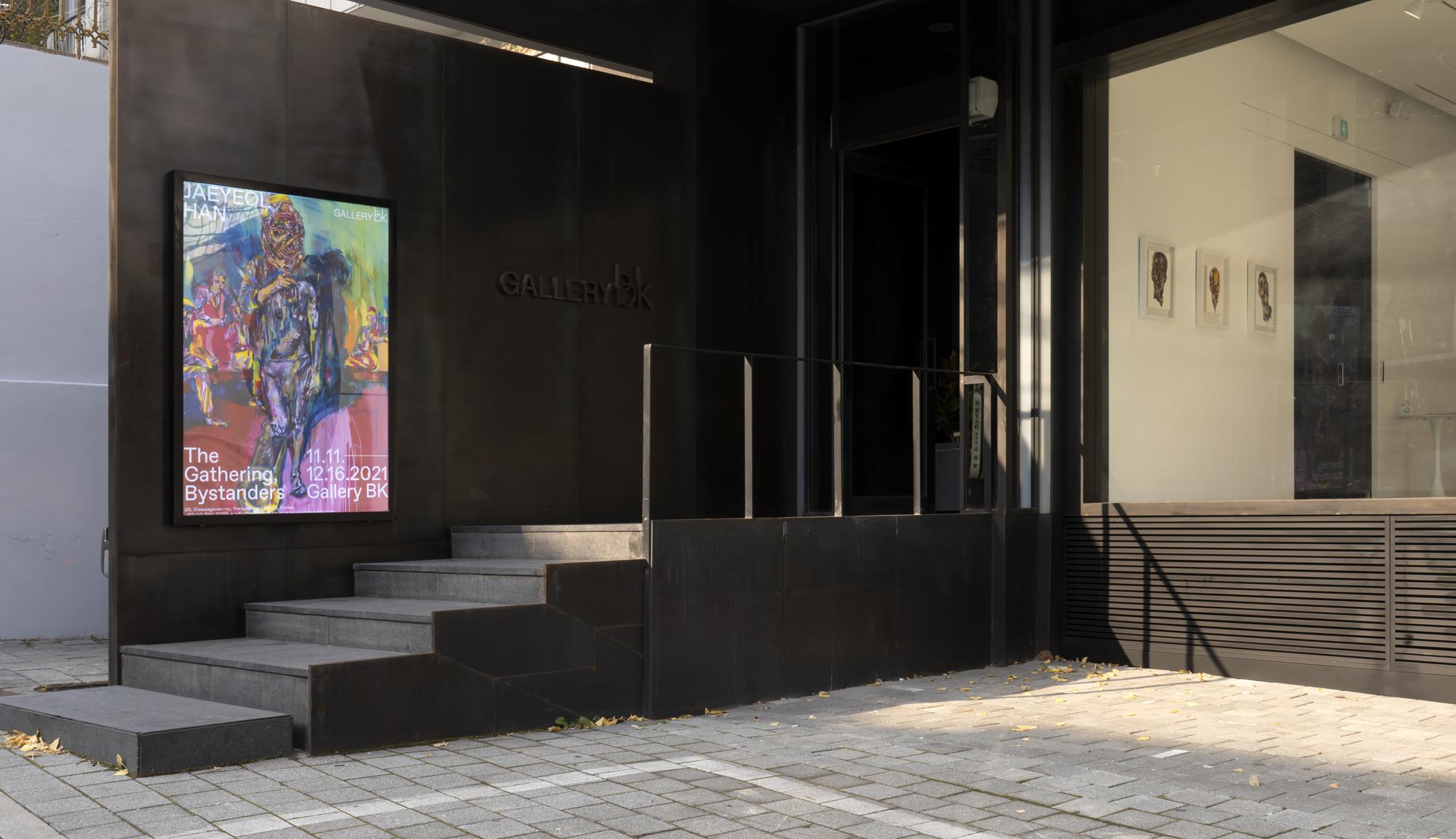Bystanders, Youth
— Project Bystanders
Tetraptych
2024
Oil and Pigment Bar on Linen
220 x 760
cm
Courtesy of the Artist, Berlin
Case Study: Youth (2024)
Youth (220 x 190 cm each, four panels totaling 220 x 760 cm, Pigment Bar on Linen) marks a significant evolution in Han's exploration of indeterminacy as aesthetic and ethical principle. This quadriptych from the Bystanders series presents a single figure in a tank top across four canvases, each capturing a different gesture that flows into the next, creating what the artist describes as a "circular visual narrative."
The title "Youth" functions not thematically but metaphorically. Youth here signifies not an age category but a condition of perpetual threshold, of unresolved becoming. Each of the four panels captures this suspension: the figure is neither fully present nor absent, neither completely formed nor dissolved.
This work radicalizes Han's earlier strategies of anonymization. Where the Passersby series erased facial features to create universal particularity, Youth maintains the distortion itself as content. The incomplete hands—that fundamental tool of human making and grasping—suggest not just individual uncertainty but a generation's fraught relationship to agency itself. In an era of climate crisis, political polarization, and systemic precarity, the inability to fully form even the gesture of reaching becomes profoundly symptomatic.
The quadriptych format amplifies this exploration of indeterminacy. Unlike traditional polyptychs that narrate progression or contrast, Han's four panels refuse linear reading. [...]
사례 연구: 《Youth》 (2024)
《Youth》 (각 220 x 190 cm, 네 패널 총 220 x 760 cm, 린넨에 피그먼트 바)는 미학적이고 윤리적 원리로서의 불확정성에 대한 한재열의 탐구에서 중요한 진화를 보여준다. 《Bystanders》 시리즈의 이 사폭화는 탱크톱을 입은 단일 인물을 네 개의 캔버스에 걸쳐 제시하며, 각각은 다음으로 흘러가는 다른 제스처를 포착하여 작가가 "순환적 시각 서사"라고 묘사하는 것을 만든다.
"Youth"라는 제목은 주제적으로가 아니라 은유적으로 기능한다. 여기서 젊음은 연령 범주가 아니라 영구적 문턱의 조건, 미해결된 되기를 의미한다. 네 패널 각각은 이러한 유예를 포착한다: 인물은 완전히 현존하지도 부재하지도 않으며, 완전히 형성되지도 해체되지도 않았다.
이 작품은 한재열의 초기 익명화 전략을 급진화한다.
《Passersby》 시리즈가 보편적 특수성을 창조하기 위해 안면 특징을 지웠다면, 《Youth》는 왜곡 자체를 내용으로 유지한다. 불완전한 손들—인간의 만들기와 잡기의 근본적 도구—은 개인적 불확실성뿐만 아니라 한 세대의 행위주체성 자체와의 곤란한 관계를 암시한다. 기후 위기, 정치적 양극화, 구조적 불안정의 시대에, 손 뻗기의 제스처조차 완전히 형성할 수 없는 무능력은 심오하게 징후적이다.
사폭화 형식은 이러한 불확정성의 탐구를 증폭시킨다. 진행이나 대조를 서사하는 전통적인 다폭화와 달리, 한재열의 네 패널은 선형적 읽기를 거부한다. [...]


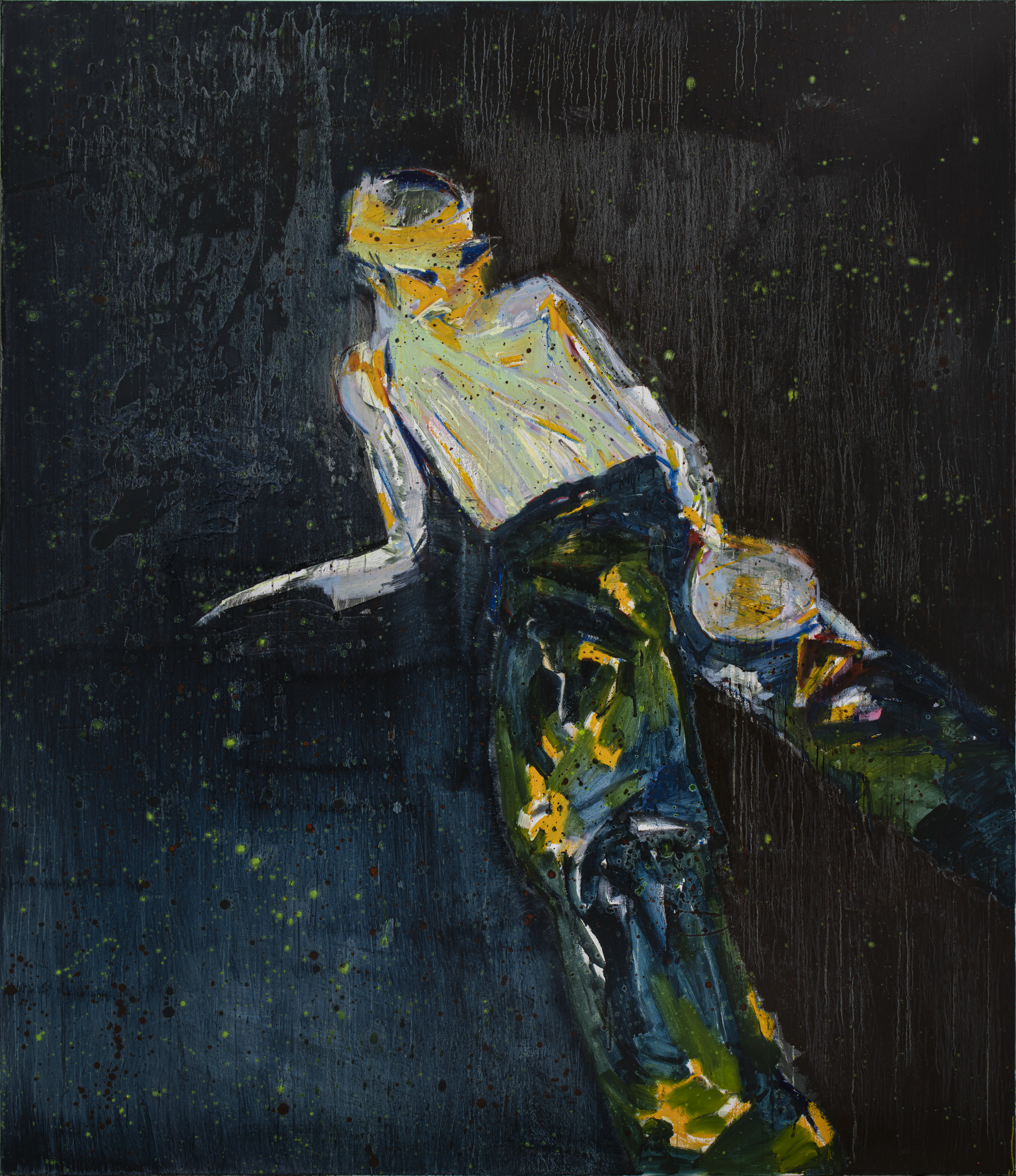






The Gathering, The Red Sofa
— Project Bystanders
2020
Pigment Bar on Linen
198 x 152 cm
Private collection
Thresholds of the Impossible: Jaeyeol Han's "The Gathering, Red Sofa"
Jaeyeol Han's "The Gathering, Red Sofa" (2020) stages a profound meditation on the impossibility of settlement in contemporary life, where the most fundamental promise of domesticity—the offering of rest—becomes a site of existential suspension. In this 198 x 152 cm work executed in the artist's signature Pigment Bar technique on linen, Han constructs what Giorgio Agamben might recognize as a "zone of indistinction," where the domestic object encounters its own spatial displacement. The painting's central paradox—a red sofa positioned outside a house while a solitary figure stands, refusing the invitation to sit—articulates the condition of contemporary nomadism not as chosen mobility but as enforced precarity.
Han's compositional strategy operates through what we might call a "trump card dialectic," inverting spatial and temporal relations with the precision of a playing card's doubled imagery. The sofa appears twice: inverted in the upper left corner like a reflected image, and properly oriented in the lower right, creating a temporal short-circuit that recalls Gilles Deleuze's concept of the crystal-image. This structural doubling produces what Deleuze describes as the "indiscernible" unity of virtual and actual, where memory and perception collapse into a single temporal knot. The upside-down sofa functions as the virtual trace of domestic possibility, while the "correct" sofa represents the actual impossibility of its realization.
The phenomenology of non-belonging
The standing figure, clothed and contemplating the ground rather than claiming the offered seat, embodies what Agamben theorizes as "pure potentiality"—the capacity to not actualize, to remain suspended between possibility and realization. This figure's refusal to sit becomes a form of what we might call "impotential domesticity," where the domestic object's function is acknowledged but never fulfilled. The painting thus stages the temporal structure of contemporary precarity, where domestic comfort exists as permanent possibility and permanent deferral.
Georges Didi-Huberman's concept of the "entre" (between) proves particularly generative for understanding this spatial arrangement. The sofa exists neither fully inside nor outside, occupying what Didi-Huberman calls the "visual underside" of domestic space. This liminal positioning creates what he describes as a "symptom image"—a visual formation that reveals the underlying tensions of its historical moment. The red sofa becomes a symptom of Korea's housing crisis, where domestic objects exist in a state of perpetual displacement, never fully settled into stable spatial relations.
The window positioned in the left corner functions as more than architectural detail; it operates as what Didi-Huberman calls a "dialectical image," simultaneously promising interiority and revealing its impossibility. The window's presence suggests the existence of interior domestic space while the sofa's exterior positioning demonstrates the failure of that promise. This architectural element activates what might be called the "architectural unconscious" of contemporary Korean society, where the dream of home persists even as its material conditions become increasingly impossible.
The dialectics of non-settlement
"The Gathering, Red Sofa" achieves its critical power through what we might call the "dialectics of non-settlement"—the simultaneous presentation of domestic possibility and its systematic denial. The painting's sophisticated formal structure, its material specificity, and its engagement with contemporary Korean social reality combine to create a work that functions as both aesthetic achievement and social critique.
The work's theoretical richness emerges from its refusal to resolve the contradictions it presents. The sofa remains outside, the figure continues standing, the gathering fails to occur. This formal persistence of irresolution reflects the broader social conditions that make such resolution impossible. In this sense, Han's painting operates as what Agamben calls a "coming community"—a formation based not on shared identity but on shared impossibility.
The painting's ultimate achievement lies in its transformation of social despair into spatial complexity, creating what might be called a "phenomenology of non-belonging" that speaks to conditions far beyond the Korean context. In an era of global housing crises, climate displacement, and economic precarity, "The Gathering, Red Sofa" offers a visual language for understanding how domestic comfort becomes politically impossible while remaining phenomenologically necessary. The work stands as a testament to art's capacity to transform social analysis into spatial experience, creating images that think through the conditions of their own impossibility.

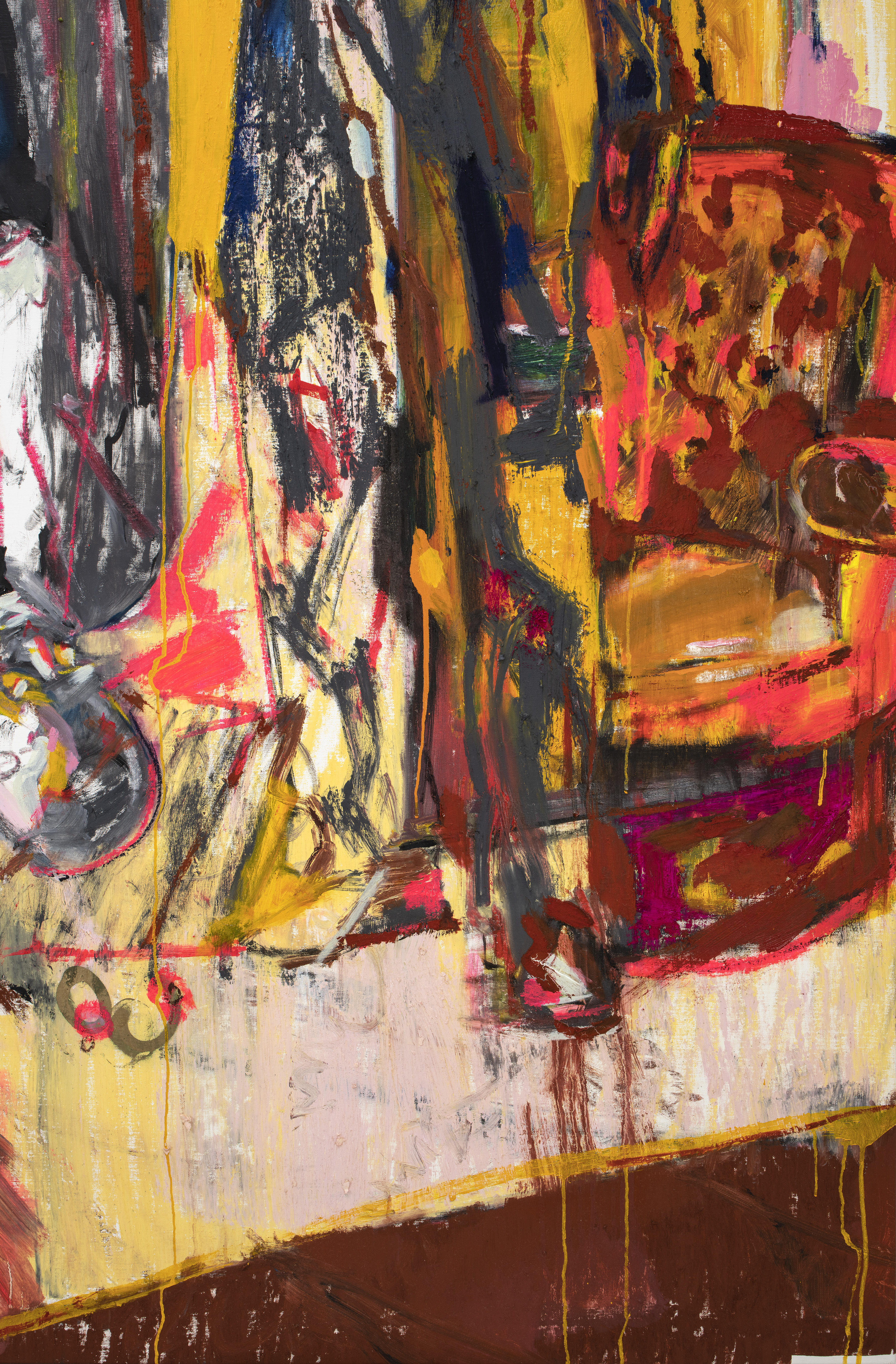



The Gathering, Miners
— Project Bystanders
2020
Pigment Bar on Linen
195 x 130 cm
Private collection
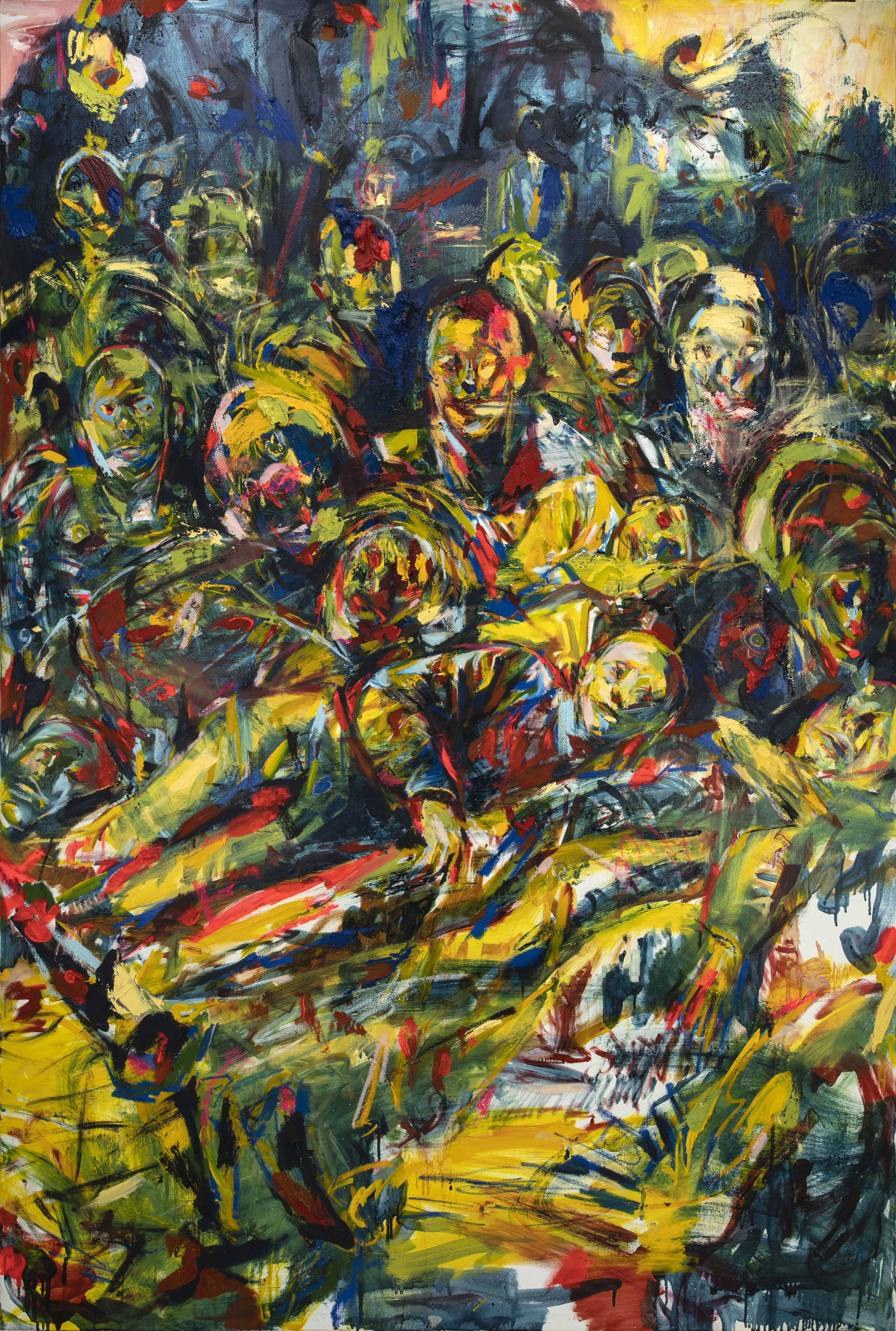
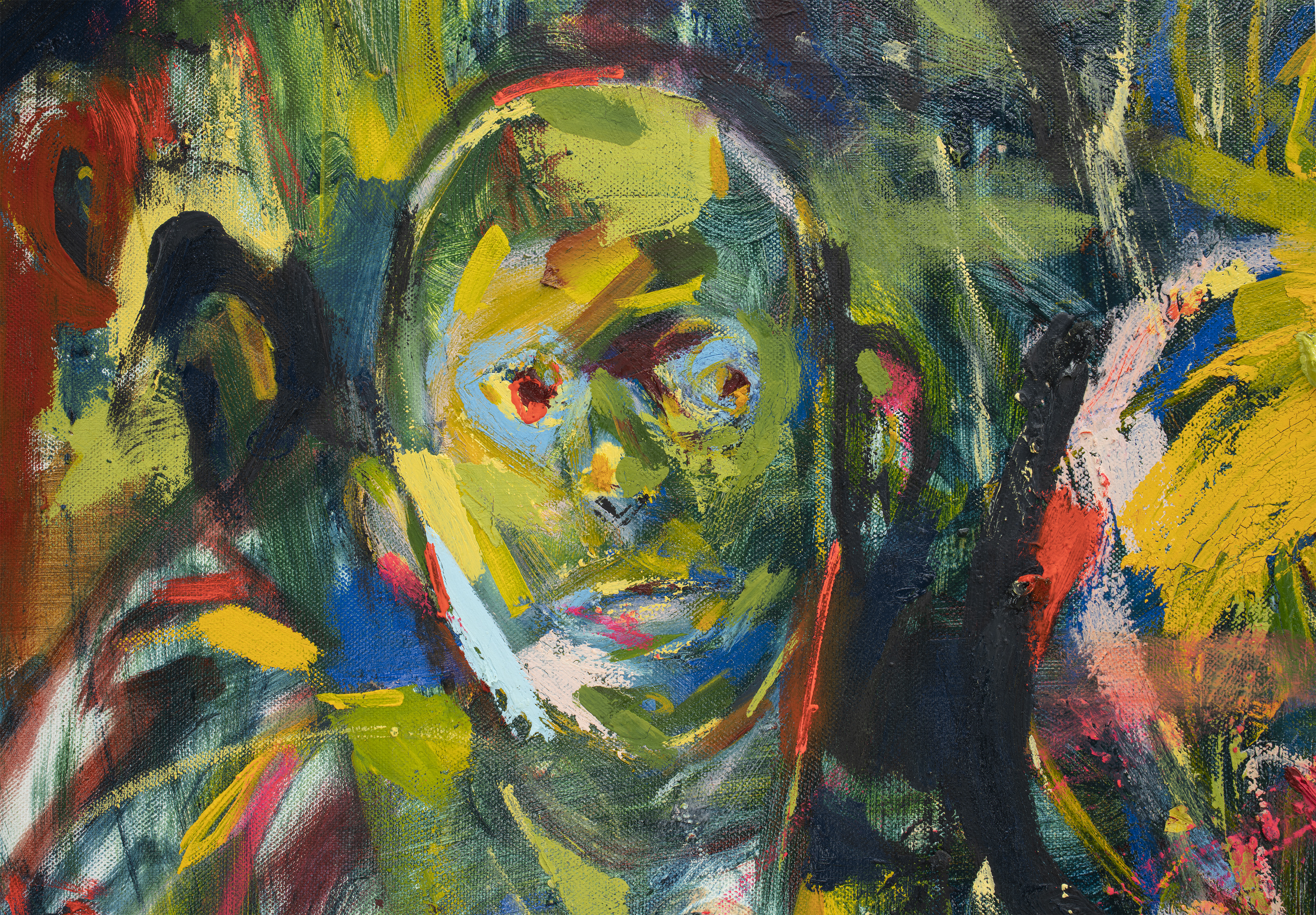
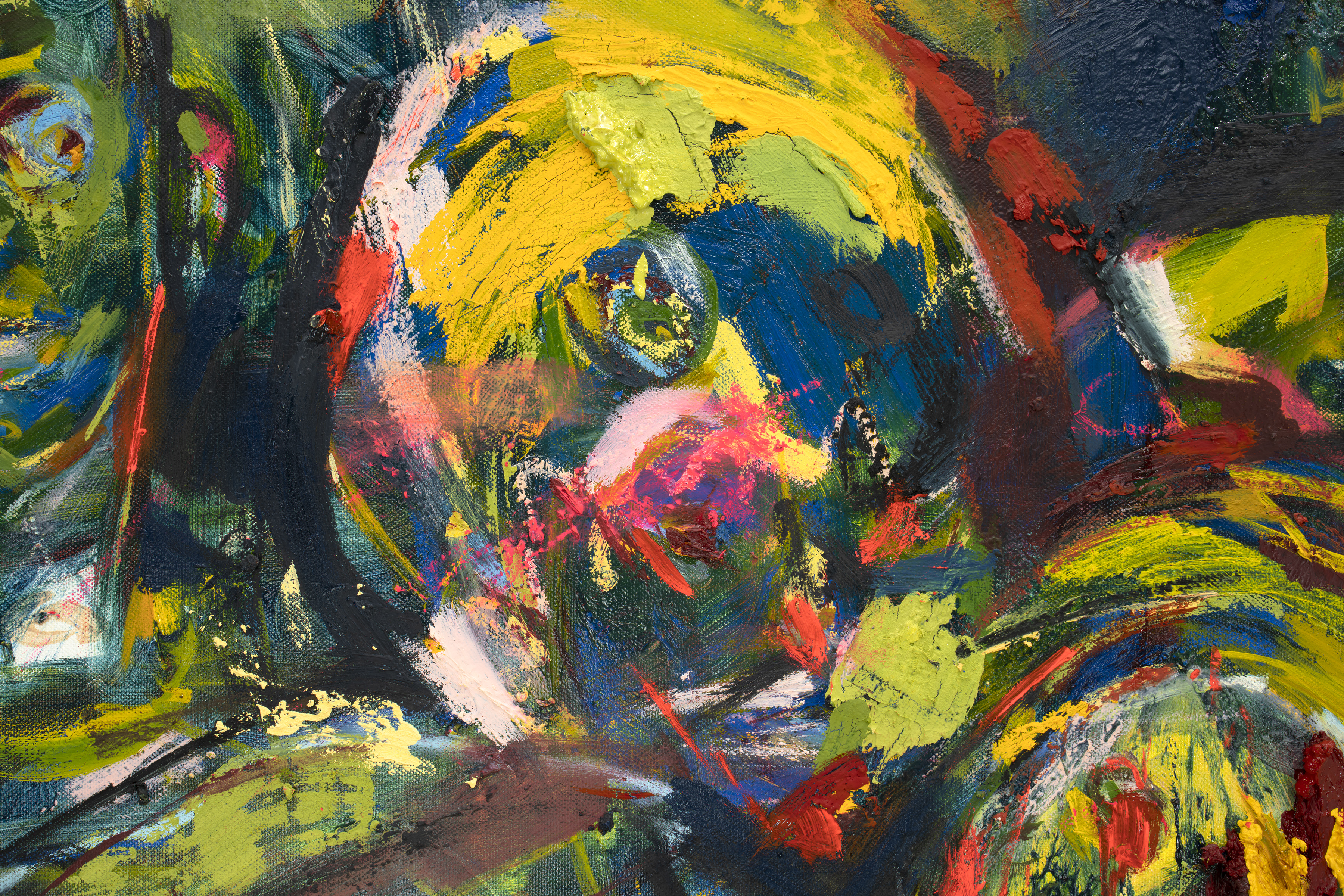
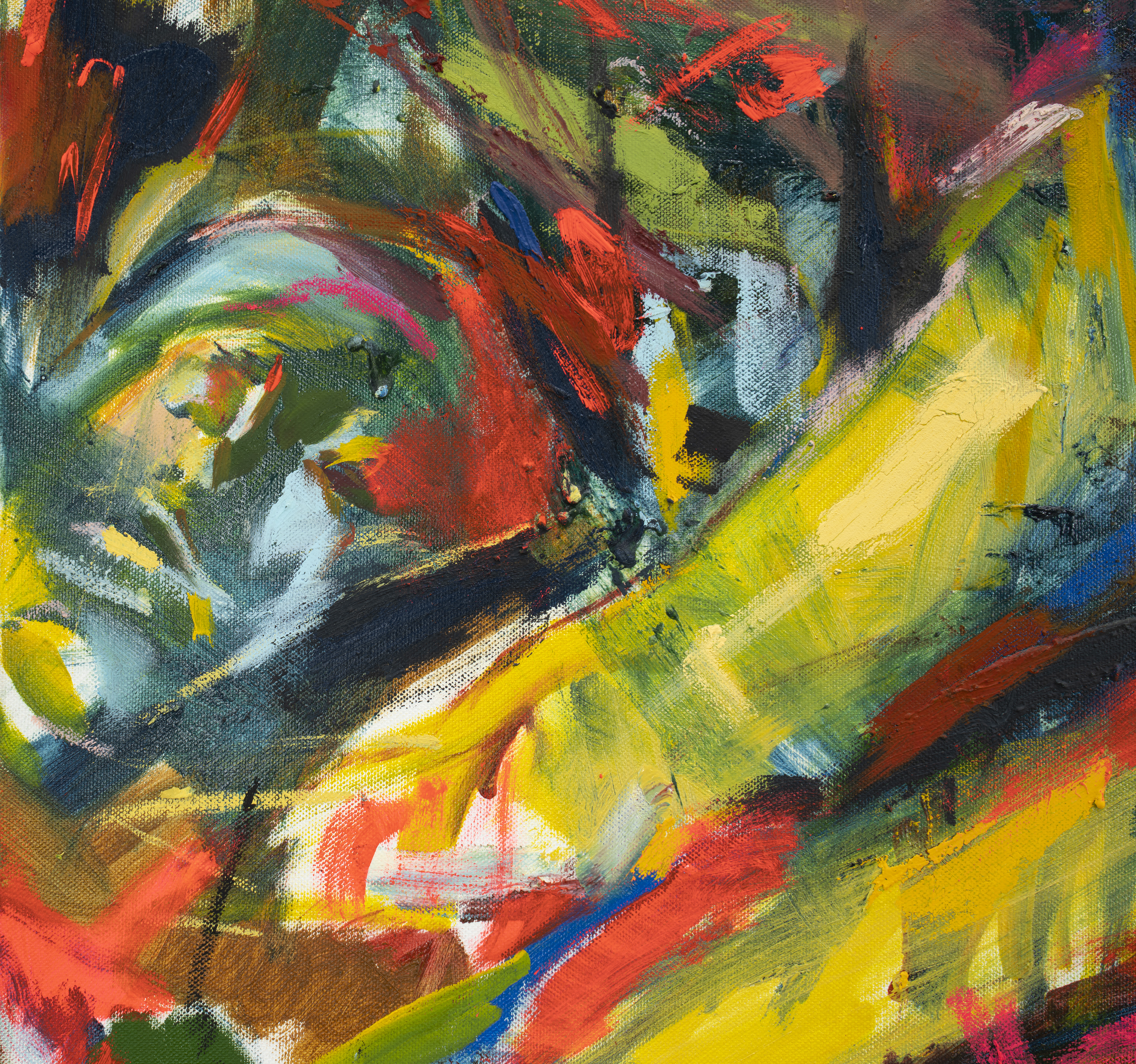


The Gathering, Bystander
— Project Bystanders
2020
Pigment Bar on Linen
194 x 130.5 cm
Private collection

The Gathering, a Man with a Bottle
— Project Bystanders
2021
Pigment Bar on Linen
194 x 130.5 cm
Private collection



